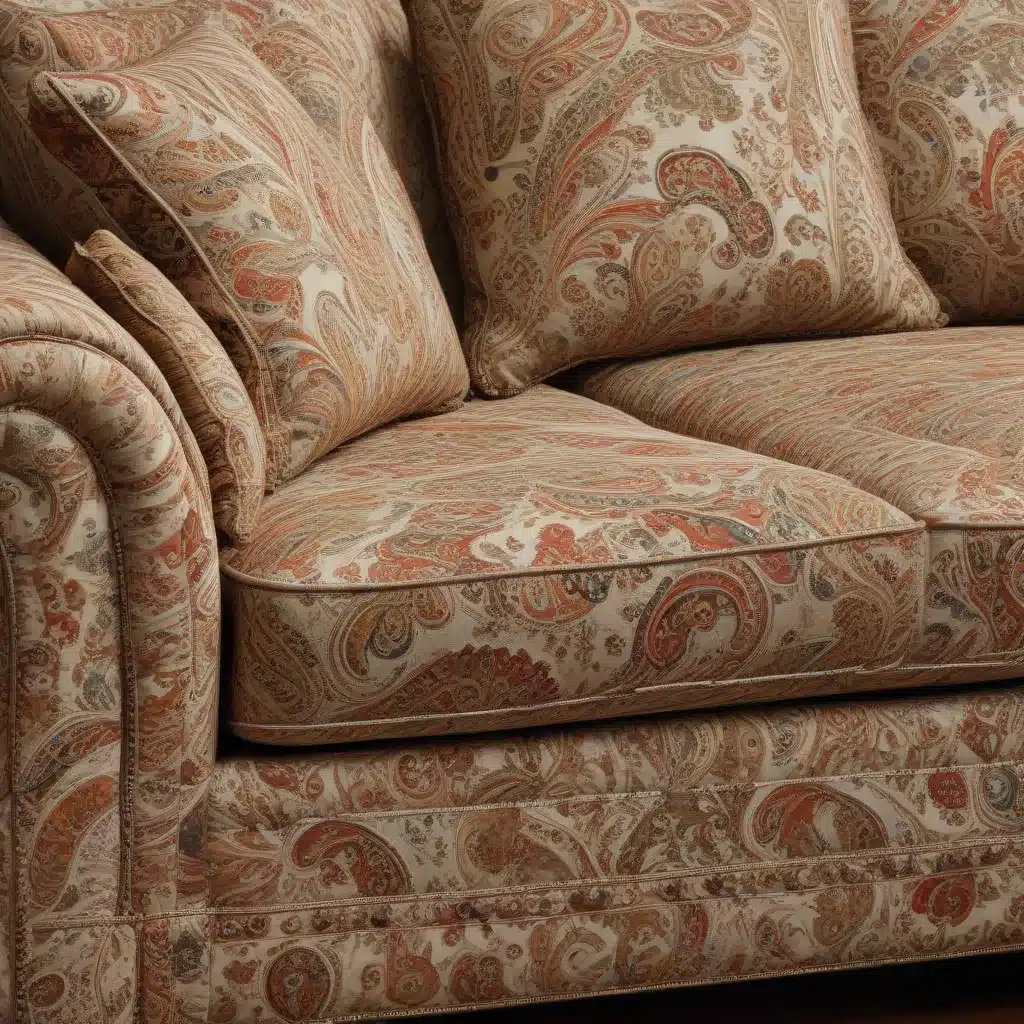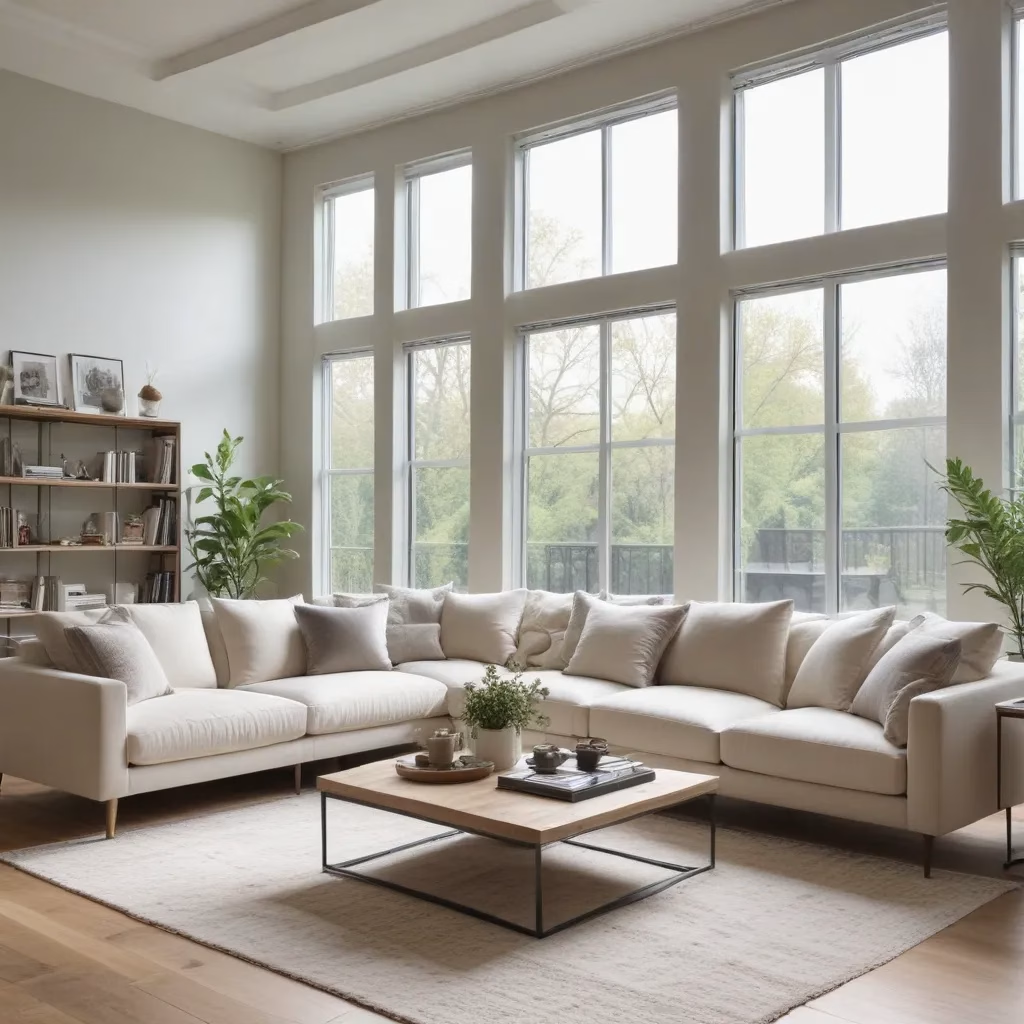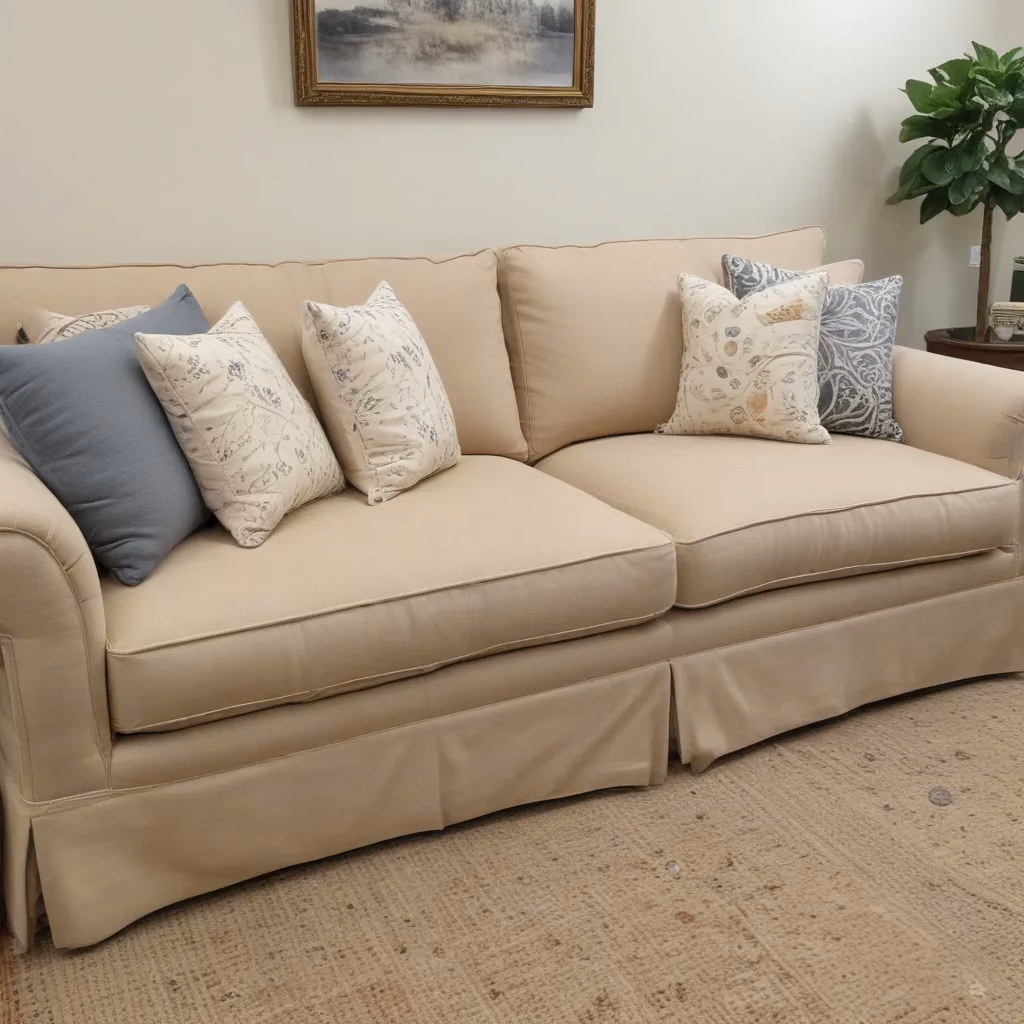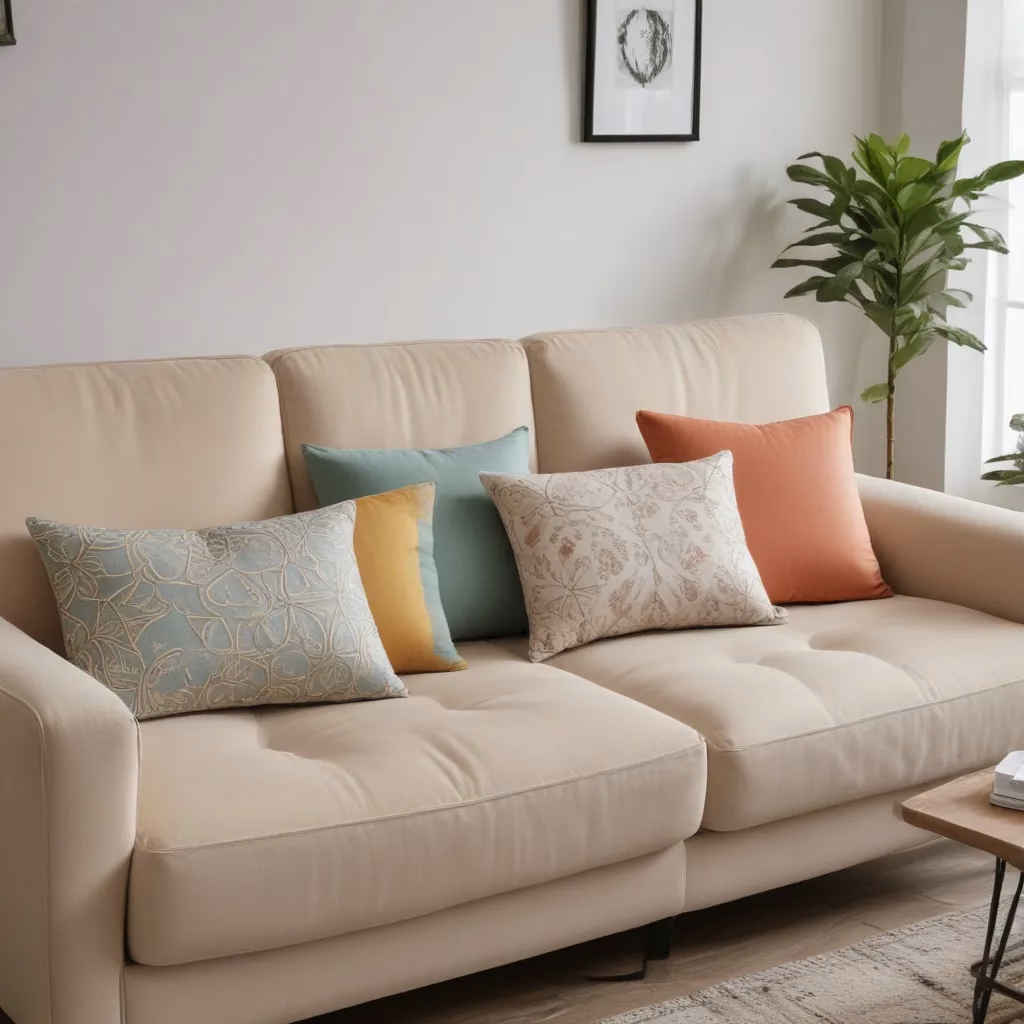
The Evolution of Paisley in Home Decor
As a furniture specialist with years of experience, I’ve witnessed the ebb and flow of countless design trends. Yet, few patterns have shown the staying power and versatility of paisley. This intricate motif, with its teardrop-shaped figures and swirling designs, has been a staple in home decor for centuries. But how has this classic print managed to remain relevant in today’s modern interiors?
The answer lies in its remarkable adaptability. Paisley has undergone a fascinating evolution, transforming from its traditional roots to become a surprisingly contemporary choice for today’s homeowners. I’ve seen firsthand how designers and manufacturers have reimagined this timeless pattern, playing with scale, color, and composition to create fresh, exciting interpretations that speak to current tastes.
In my experience, the key to paisley’s enduring appeal is its chameleon-like quality. It can be bold and dramatic or subtle and sophisticated, depending on how it’s used. I’ve advised clients on incorporating paisley into their homes in ways that range from statement upholstery on a sofa to delicate accent pillows that add just a touch of pattern to a neutral room. The versatility of paisley allows it to complement a wide array of design styles, from traditional to eclectic to ultra-modern.
Selecting the Perfect Paisley for Your Space
When it comes to choosing paisley for your home, there are several factors to consider. As someone who’s helped countless homeowners make these decisions, I can tell you that the process is both an art and a science. Here are some key points to keep in mind:
-
Scale: The size of the paisley pattern can dramatically affect its impact in a room. Large-scale paisleys make a bold statement and work well in spacious areas or on larger pieces of furniture. Smaller, more intricate paisleys can add texture and interest without overwhelming a space.
-
Color: The color palette of your paisley can completely change its character. Traditional reds and deep jewel tones evoke a classic, luxurious feel, while pastel paisleys can create a light, airy atmosphere. I’ve even seen monochromatic paisleys used to great effect in modern, minimalist interiors.
-
Fabric: The material on which the paisley is printed or woven can significantly influence its overall look and feel. A silk paisley has a very different effect than a cotton or linen one. Consider both the aesthetic and practical aspects of the fabric choice.
-
Context: Think about how the paisley will interact with other elements in your room. Will it be the star of the show or a supporting player? I always encourage my clients to consider the existing colors and patterns in their space when selecting a paisley design.
Remember, choosing the right paisley is about more than just personal preference. It’s about creating a cohesive, harmonious interior that reflects your style while also being functional and comfortable.
Paisley in Upholstery: Making a Statement
One of the most impactful ways to incorporate paisley into your home is through upholstery. A paisley-upholstered sofa or armchair can become the focal point of a room, setting the tone for the entire space. However, it’s important to approach this bold choice with careful consideration.
In my years of working with clients, I’ve found that many are initially hesitant about using such a strong pattern on a large piece of furniture. They worry it might be too overwhelming or that they’ll tire of it quickly. But when done right, a paisley sofa can be a timeless addition to your home that you’ll love for years to come.
Here are some tips I often share with clients considering paisley upholstery:
-
Balance is key: If you’re opting for a paisley sofa, keep the rest of the room relatively simple. Solid colors and subtle textures work well to complement the intricate pattern without competing with it.
-
Consider the room’s function: A paisley sofa might be perfect for a formal living room or a study, but it might not be the best choice for a casual family room that sees heavy use.
-
Think long-term: While it’s important to choose a paisley you love, also consider how it will fit into your home as your tastes evolve. Opting for a classic color scheme can help ensure your paisley piece stands the test of time.
-
Don’t forget about comfort: As beautiful as paisley can be, comfort should always be a priority when choosing upholstery. Make sure to select a fabric that feels good to the touch and will hold up well to regular use.
Incorporating Paisley Accents
If a fully upholstered paisley piece feels like too big a commitment, there are plenty of ways to incorporate this pattern on a smaller scale. In fact, some of my favorite paisley implementations have been through carefully chosen accents.
Throw pillows are an excellent way to introduce paisley into your decor. They allow you to experiment with different colors and scales of the pattern without making a major investment. I’ve seen clients completely transform the look of their living rooms simply by adding a few paisley pillows to their sofas.
Window treatments are another area where paisley can make a significant impact. Paisley curtains or roman shades can add visual interest to a room while also providing functional benefits like light control and privacy. When selecting paisley for window treatments, consider how the pattern will look when the curtains are both open and closed.
For those who want just a hint of paisley, smaller accessories like lampshades, ottomans, or even framed textile art can be great options. These pieces allow you to incorporate the pattern in a more subtle way, adding depth and character to your space without overwhelming it.
Maintaining Your Paisley Pieces
Once you’ve incorporated paisley into your home, it’s important to know how to care for it properly. The maintenance required will largely depend on the type of fabric and the item itself, but here are some general tips I always share with my clients:
-
Regular cleaning: Vacuum upholstered pieces regularly to prevent dust and dirt from settling into the fabric. For paisley throw pillows or curtains, follow the care instructions on the label.
-
Spot cleaning: Address spills immediately to prevent staining. Always blot, never rub, to avoid damaging the fabric.
-
Professional cleaning: For larger upholstered pieces, consider professional cleaning every 12-18 months, or more frequently if the item sees heavy use.
-
Rotate cushions: If you have a paisley sofa, rotate the cushions regularly to ensure even wear.
-
Protect from sunlight: Direct sunlight can fade fabrics over time. Use window treatments or consider UV-protective coatings on windows to protect your paisley pieces.
By following these maintenance tips, you can help ensure that your paisley pieces remain beautiful and vibrant for years to come.
Pairing Paisley with Other Patterns
One of the questions I’m most frequently asked about paisley is how to pair it with other patterns. Many homeowners are understandably nervous about mixing patterns, fearing that the result will be chaotic or visually overwhelming. However, when done thoughtfully, combining paisley with other patterns can create a rich, layered look that adds depth and interest to your space.
The key to successful pattern mixing lies in understanding the principles of scale and color. Here are some guidelines I often share with my clients:
-
Vary the scale: When combining patterns, it’s important to use designs of different sizes. If you have a large-scale paisley on your sofa, for example, you might pair it with a smaller geometric pattern on accent chairs or curtains.
-
Stick to a cohesive color palette: Choose patterns that share at least one color in common. This creates a sense of harmony even when the patterns themselves are quite different.
-
Use solids as a buffer: Incorporate solid-colored pieces to give the eye a place to rest. This can help prevent the space from feeling too busy.
-
Consider the 60-30-10 rule: In interior design, this rule suggests using your dominant pattern (often paisley in this case) for about 60% of the room, a secondary pattern for 30%, and an accent pattern for the remaining 10%.
-
Don’t forget about texture: Textured solids can act as a pattern in their own right. A nubby wool throw or a velvet pillow can add visual interest without competing with your paisley.
One combination I particularly love is paisley with stripes. The organic, flowing nature of paisley contrasts beautifully with the crisp lines of stripes, creating a dynamic and visually interesting pairing. I’ve used this combination in numerous client homes, from traditional studies to contemporary living rooms, always with stunning results.
Another successful pairing is paisley with florals. While it might seem counterintuitive to combine two organic patterns, the key is in the scale. A large-scale paisley can work beautifully with a smaller, more delicate floral print. This combination often creates a romantic, bohemian feel that’s perfect for bedrooms or cozy reading nooks.
Paisley in Different Design Styles
One of the most fascinating aspects of paisley, in my experience, is its ability to adapt to various design styles. Far from being confined to traditional or maximalist interiors, paisley can find a place in almost any aesthetic. Let’s explore how this versatile pattern can be incorporated into different design styles:
Traditional
In traditional interiors, paisley is right at home. Here, you can embrace the pattern’s rich history and opulent associations. I often recommend using paisley in its classic jewel-toned iterations for these spaces. A paisley-upholstered wingback chair or a set of paisley curtains in deep reds, blues, or greens can add a touch of timeless elegance to a traditional living room or study.
Contemporary
For contemporary spaces, look for paisleys with a modern twist. This might mean oversized patterns, unexpected color combinations, or simplified, geometric interpretations of the classic teardrop shape. I’ve seen striking examples of contemporary paisley wallpapers used as accent walls in otherwise minimalist rooms, creating a perfect balance of interest and restraint.
Bohemian
Paisley and bohemian style are a match made in heaven. The pattern’s Indian origins and association with the 1960s counterculture make it a natural fit for boho interiors. In these spaces, don’t be afraid to mix and match different paisley patterns and colors. Layer paisley throws and pillows on a sofa, or use paisley bedding for a fun, eclectic bedroom.
Scandinavian
While paisley might not be the first pattern that comes to mind for Scandinavian interiors, it can work beautifully when used thoughtfully. Look for paisleys in muted, nature-inspired colors like soft greys, pale blues, or sage greens. Use the pattern sparingly – perhaps on a single accent chair or as a subtle wallpaper in a small nook.
Industrial
In industrial-style interiors, paisley can provide a welcome softening effect. Consider using paisley textiles in warm, earthy tones to balance out the hard edges and cool metals often found in these spaces. A paisley area rug under a sleek metal coffee table, for instance, can create an intriguing contrast.
Coastal
For coastal or beach-inspired interiors, paisley can add a touch of sophistication without detracting from the laid-back vibe. Look for paisleys in shades of blue and white for a classic coastal feel, or consider coral and turquoise for a more tropical twist. Paisley throw pillows on a slipcovered sofa can be a perfect addition to a breezy beach house living room.
The Future of Paisley in Interior Design
As we look to the future, I’m excited about the continued evolution of paisley in interior design. Based on the trends I’m seeing and my conversations with industry colleagues, here are some predictions for where paisley might be heading:
-
Digital customization: With advancements in digital printing technology, we’re likely to see more options for customized paisley designs. Homeowners may soon be able to tweak colors, scale, and even the intricacy of paisley patterns to perfectly suit their spaces.
-
Sustainable materials: As sustainability becomes increasingly important in the design world, we can expect to see more paisley textiles made from eco-friendly materials like organic cotton, recycled polyester, or innovative plant-based fabrics.
-
Fusion with other styles: I anticipate seeing more designs that blend paisley with other cultural motifs, creating unique, globally-inspired patterns that reflect our interconnected world.
-
Minimalist interpretations: While traditional paisley is intricate and detailed, I expect we’ll see more stripped-down, minimalist versions of the pattern emerging, appealing to those who prefer a cleaner aesthetic.
-
Smart textiles: As technology continues to advance, we might even see paisley incorporated into smart textiles – imagine a paisley-patterned throw that can regulate its temperature or a paisley upholstery fabric that resists stains at a molecular level.
Conclusion
Paisley, with its rich history and remarkable adaptability, continues to be a fascinating element in the world of interior design. From its origins in ancient Persia to its current status as a versatile, modern design option, paisley has proven its staying power time and time again.
As a furniture specialist, I’ve had the pleasure of working with paisley in countless homes, each time discovering new ways to incorporate this timeless pattern. Whether you’re drawn to its traditional elegance, its bohemian flair, or its potential for modern reinterpretation, there’s a paisley out there for every style and every home.
Remember, the key to successfully incorporating paisley into your space lies in understanding its versatility, respecting its rich heritage, and not being afraid to experiment. Whether you choose to make a bold statement with a paisley sofa or add subtle touches with accessories, this pattern has the power to transform your space and reflect your personal style.
As we look to the future, I’m excited to see how paisley will continue to evolve and adapt to changing tastes and technologies. One thing is certain: this enduring pattern will continue to inspire and delight homeowners and designers alike for years to come.
So, the next time you’re considering a refresh for your home, why not give paisley a chance? You might just find that this ancient pattern is exactly what your modern space needs. And if you’re looking for expert advice on incorporating paisley or any other design elements into your home, don’t hesitate to reach out to the team at Sofa Spectacular. We’re always here to help you create a space that’s uniquely, beautifully you.



